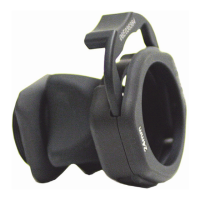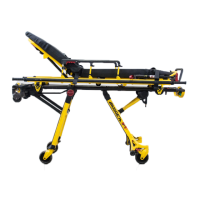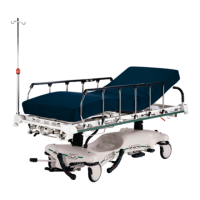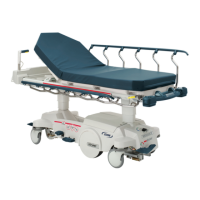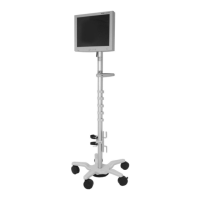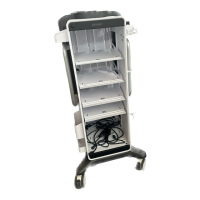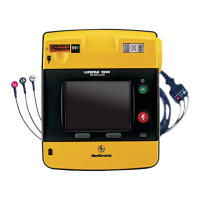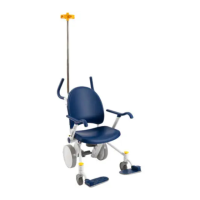www.stryker.com 1115 -10 9 - 0 01 R E V D 27
Return To Table of Contents
OPERATING THE SIDERAILS
Raising and lowering the siderails safely is a two-handed operation. Use one hand to hold and position the siderail and
the other hand to operate the siderail latch.
To raise the siderails, pull up on the siderail (A) and raise it to the highest position until the latch (B) engages as shown
in Figure 14.
WARNING
• After raising the siderails, pull firmly on the siderail to ensure that it is securely locked into the up position. Siderails
are not intended to serve as a patient restraint device to keep patients from exiting the unit. Siderails are intended
to keep a patient from inadvertently rolling off the unit. It is the responsibility of the attending medical personnel
to determine the degree of restraint necessary to ensure that a patient will remain in place. Failure to utilize the
siderails properly could result in patient injury.
• Leave the stretcher height in the lowest position when the patient is left unattended. Leaving the stretcher height
in a raised position could increase the chance of patient falls and injury.
• When using any mattress thicker than 2.5 inches or when using a mattress overlay with the Prime X option, extra
caution and operator supervision is recommended to reduce the risk of patient falls due to lesser siderail coverage.
To lower the siderails, pull up on the latch (B) and guide the siderail to the lowest position as shown in Figure 14. The
latches (B) are colored yellow for easy identification.
WARNING
When lowering the siderail to the collapsed position, keep extremities of patients and staff away from the siderail spindles
or injury could occur.
Note: The foot end of the siderail top rail can be used as a push/pull handle.
CAUTION
To avoid injury or damage to the equipment, do not allow the siderail to lower on its own.
Note: There is a dual siderail latch option available with latches on both ends of the stretcher.
Operation Guide
Figure 14: Siderails
A
B

